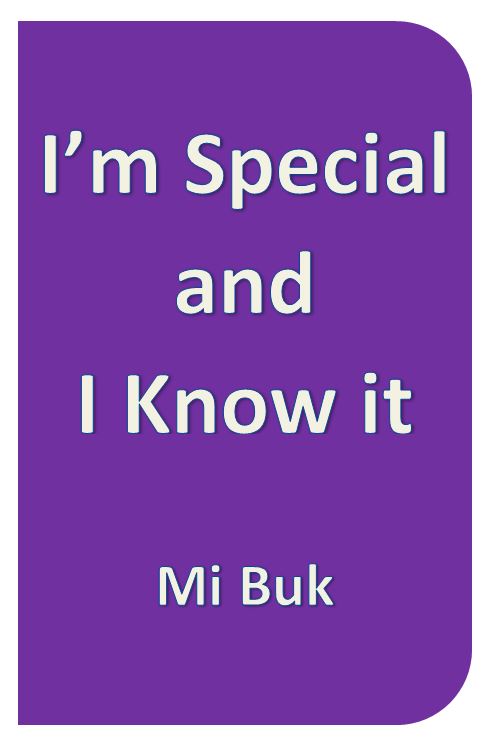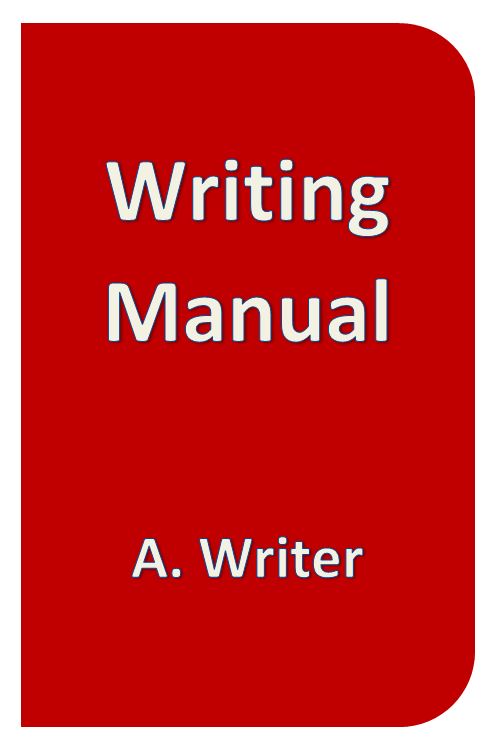
It’s awfully silly to start marketing your book until you first devote some time to a couple of basic questions:
- What causes people to buy books? (Equally important: What tends to deter sales?)
- Who is your specific target audience?
Knowing the answers to these questions can significantly affect your marketing strategies. In this article, we’ll focus on Question #1.
(1) Browsing for books on the top 100 bestseller lists.
More than any other method, customers buy books by shopping the top 100 bestseller lists. There are New York Times bestseller lists, there is a special bestseller section in most bookstores, and Amazon lists their top 100 sellers in any browse category. You can even search for the top 100 authors.
Evidently, these books were good enough that many other people read them. Many of these books are traditionally published and were written by popular authors. But more and more indie authors are starting to break through, especially on Amazon.
Bestselling books sell dozens or hundreds of copies per day (of course, it depends whether we’re talking overall or just in a particular category or subcategory, and the precise number can be sensitive to a number of factors). So bestsellers account for a huge percentage of book sales.
You might not like the fact that many customers look to see what’s popular and shop for books based on this. But that’s irrelevant. Unless you have an idea to change the way millions of people shop for books. It’s just something to consider.
If you can succeed in earning a spot on any of the top 100 lists, this amazing exposure can lead to wonderful things. Provided that your book runs with it; some books get onto the list and fall right off.
There are tens of thousands of authors doing all the right things (and others doing wrong things) to try to get their books onto these coveted lists, and you’re competing against popular authors and traditional publishers. But you’ll find some indie authors there, too (studying what they’ve done right may prove to be valuable research).
If you feel strongly that you have a book with the potential to get onto these bestseller lists, go for it!
- You need a book idea that has a large preexisting audience. Find a genre that you’re a good fit to write in and research what this audience expects. Develop your writing and storytelling toward this end. Become familiar with the rules of the genre, and understand why these rules exist.
- Develop a fantastic story and memorable characterization for fiction, or valuable content for nonfiction. Write in a way that your audience will enjoy the read in terms of both making the words flow (or not, when the occasion arises) and use of grammar blended with style. Perfect the book cover to cover in terms of front matter, back matter, editing, and formatting. You don’t want anything to detract from the read. Give people reasons to leave positive reviews and recommend the book to others, and avoid giving reasons to say anything negative (it’s unavoidable, but strive to minimize this).
- You need initial sales to get things going. A history of poor sales rank is a challenge to overcome. So build buzz for your book with cover reveals, letting people discover that you’re writing a book, interacting with people who ask how your book is coming along, getting feedback on various aspects of your book (cover, title, blurb, first chapter, draft) on different occasions from different groups of people in person and online. Focus groups, contests, promotions, etc. can help you get people excited about your coming book.
- Don’t underestimate the importance of packaging. The book has to absolutely look like it belongs in its genre. If you want a top seller, on top of everything else, the cover has to quickly register as being the kind of book that the customer is looking for. If the cover attracts the wrong audience, there won’t be any sales. Research the covers of bestsellers in the genre. Design a professional-looking cover that will attract customers who are accustomed to seeing those covers. The title, cover, and blurb need to send a unified message and grab the target audience’s attention. Craft a killer blurb that will entice interest without giving too much away. The Look Inside needs to close the deal.
- Do premarketing. Don’t wait until your book is published. Look for bloggers in your genre who occasionally review books well in advance of publishing, since they may already have numerous requests and reading takes time. Make a professional press release package. Contact local media. Try giveaways on Goodreads. Arrange signings and readings. Have a book launch party. Why wait until your book is already available and not selling well to do all the things you should be doing? If you’re going to market your book anyway (and you’ll discover the hard way that you need to), do it right and help your book take off with a bang in the first place. Even if you don’t think the 100 bestseller list is realistic, doing your best to get your book on this list gives you the best prospects for success.
- Believe in your book. Visualize success. Not just you sitting on a pile of money receiving praise from everyone you meet. Visualize the path to your success that makes this vision realistic and work diligently to get there. If you don’t show belief in your own book, how can you expect others to believe in your book? Your lack of confidence can deter sales. But don’t get overconfident as bragging tends to deter sales.
(2) Shopping for books by their favorite authors.
When customers like books, they sometimes search for other books written by the same author. Indeed, books are frequently sold this way.
This affects all authors who’ve written more than one book (well, unless you write one children’s book and one book that’s not for children, for example).
Write two or more related books. Or better yet, write a series of books. Then you can benefit from such sales.
Ah, but there’s a catch. The first book they read has to be good enough to make many readers want more. The book has to be seem like a good value (and the subsequent books can’t seem like a rip-off), and should provide a sense of satisfaction by itself.
- Memorable characters give readers a reason to continue the series.
- A great storyline in one book creates high expectations for more of the same.
- Editing, writing, formatting, and storyline mistakes discourage future sales.
- The subsequent volumes need to live up to expectations in order to merit good reviews and recommendations; if they don’t live up to this, there may be negative referrals (e.g. “Stay away from that series”).
Discounting book one, making book one free, creating an omnibus, promoting temporary discounts, contests, etc. can help generate sales. The more people who read one of your books and love it, the more of your other books you are likely to sell. Plus this improves your sales rank, chances of getting reviews, and prospects for word-of-mouth sales.
(3) Recommendations from trustworthy sources.
An editorial review from a highly reputed source, like the New York Times, can have a very positive impact. This isn’t realistic for most indie authors (or even many traditionally published authors), but there are many ways that every author can benefit from recommendations.
The most accessible is word-of-mouth sales. If the book is good enough – see the points from (2) above – for a percentage of the customers to recommend it to others, this can generate valuable sales. If a thousand people read a book initially, and a hundred recommend it to their friends, family, coworkers, and acquaintances who read similar books, and then a fraction of those people recommend it to others, and so on, sales can really grow in the long-term.
You have to be patient. First, you need the initial batch of people to read your book. If sales are slow (a few a day), that can take a long, long time. See the points from (1) above for a few marketing ideas.
Once people buy your book, they must read your book. They might already have other books to read first. Then when they do read your book, it might just be in their spare time, which they might not have much of. As soon as they finish reading your book, they won’t go scream from the mountaintops. They might not mention your book at all. The more they love your book, the more likely they will recommend it. But then it might not be until it naturally comes up in conversations, which might not be for some time. Then those people might not buy your book right away. It can be weeks after they hear about your book before they consider buying. Not everyone who hears great things about your book will buy it.
It can take several months for word-of-mouth sales to build up. And your book has to be good enough to receive those recommendations. You can do your best to perfect your book, but you can’t control customer recommendations. All you can do is wait and hope.
If someone very social falls in love with your book, that can be quite fortunate. If people who are really connected in the social media world enjoy your book, this can potentially be big. Just imagine the buzz in social media when Twilight was coming out. Reproducing that might not be realistic, but it shows the potential. If a blogger in your genre falls in love with your book, or if a book reviewer for an online magazine loves your book, or even a customer who often reviews books on Amazon loves your book… recommendations help, especially when they come from trustworthy sources.
You can try to solicit reviews from bloggers in your genre who sometimes review books. Maintaining a blog and being active in social media might help make some valuable connections. But remember that some bloggers receive an insane number of requests and that it takes time to read books.
Put together a press release kit with advance review copies and contact local media. For indie authors, it may be easier to get an article or review if you write nonfiction, have something unique going for you (like being a triplet, but there are many other ways for the press to take interest in you), or if you have a very small local paper.
You also have your own friends, family, coworkers, and acquaintances. If you succeed in building buzz for your book – see point (1) above – then they may help stimulate sales by recommending your book to their friends, coworkers, and acquaintances.
Another trustworthy source that’s very valuable is the retailer itself.
Once a book sells a few times along with another book, it can show up on Customer Also Bought lists. The more frequently your book sells – and the more effective your marketing efforts – the more these lists can help give your sales a significant boost.
Excellent packaging boosts your chances of getting sales from Customer Also Bought lists – see point (5) below.
(4) Discounts, promotions, and contests.
People tend to love sales. But they have to know about the sale, which means that you have to promote your discount. And they have to want the product. The book has to be a good fit for them. Which means you have to find your target audience and market your promotion toward them.
A temporary discount entices customers to buy before the sale ends. If a discount is too frequent and regular, people will learn to wait for it, and sales may be much slower in the interim. Contests and giveaways can help stimulate interest, too. Like the giveaway program at Goodreads (but you need to have a hard copy, like paperback).
Amazon sometimes discounts books. They have been doing this more frequently in 2013 for indie authors, especially with CreateSpace paperbacks. There is no guarantee that a retailer will put your book on sale, and you have no control over this. (But with CreateSpace, you still get the full royalty, provided that the book sells directly through Amazon.)
(5) Searching for books by keywords or browsing for books in categories.
Shoppers do go to Amazon and other online booksellers to search for books by keywords or just browse page by page through categories (or do a search within a specific category). Browsing page by page without a search tends to put the bestsellers up front, like point (1) above. But customers do search for various keywords.
A greater percentage of books sell other ways than searching for keywords. However, there are so many customers buying books that this still represents a very large number of book sales.
The problem is that there are tens of millions of books to search for.
- Millions of books sell this way, but there are also millions of books. On average, most titles sell fewer than one a day through this method. Fewer than a hundred thousand titles sell multiple copies per day through online search results. (The top couple hundred thousand books on Amazon sell one or more per day, but many of these sales are not from keyword searches.)
- Books that show up on the first page of one or more keyword searches are much more likely to sell through keyword searches. Most books don’t show up on the first page of any search results. Only a few books show up on the first page of very popular keyword searches.
Amazon tends to reward books whose authors and publishers (scrupulously) help themselves. The better your book and the better your marketing, the greater your sales rank and the more reviews you will draw, which can help to improve your book’s visibility. It’s not just sales rank and reviews. More sales might mean you’re selling more books through keyword searches, which may have a greater effect on visibility than from sales rank along.
Once your book becomes visible in one or more keyword searches, you need for it to get noticed.
Excellent packaging can make a marked difference once your book becomes visible. It has to attract the right audience. If it looks like sci-fi, but it’s really action, then the people who click on the book won’t be the people who buy the book. Research books in the genre that sell regularly to see what customers are accustomed to seeing in search results. You want a professional-looking cover that clearly signifies the genre in order for keyword searches to work for your book. You also need a title, cover, and blurb that send a unified message about what to expect. A killer blurb that attracts interest without giving too much away can help immensely, provided that your book is getting noticed. The Look Inside needs to be good enough to seal the deal once shoppers become interested.
(6) Personal interactions with the author.
If you’re not selling books the other 5 ways, this is your best opportunity. Even authors who are selling books the other ways should be taking advantage of this. A very significant number of books sell through personal interactions with the author. Strive to provide the personal touch with your marketing endeavors.
It’s a treat to be able to read a book where you’ve personally interacted with the author. When people interact with you and enjoy the interaction, they are much more likely to read your book, enjoy your book (because they read it in a good frame of mind, whereas we often read critically or with skepticism), and review your book.
Especially if you make each person you interact with feel special. If they interacted with you and felt like you were a salesperson, they probably won’t feel special. If they meet you, ask what you do, discover you’re an author, and enjoy your discussion, what a difference that makes. But don’t interact with people just because you want to sell them something. Interact with them to get to know them. If you really care, this will show and can make a huge difference. Be genuine.
Charm them.
Who is your target audience? These are the people you want to interact with personally because they are many times more likely to buy your book than anyone else. If you write a romance and market it mainly to people who rarely or never read romance, your marketing will be a disaster. Think long and hard where and how to find your target audience. And then you don’t want to be there just to sell your book. You want to provide help (volunteer work), knowledge (a seminar, a blog), or entertainment (a reading), for example, to help attract your target audience, and have them discover that you wrote a book that may interest them (happen to have bookmarks to pass out?).
You can start with friends, family, acquaintances, and coworkers. If you have a large (or any size) social media following, you can tap into this to help with initial sales. (Remember, close friends and family can’t review your book on Amazon.)
You can meet people anytime. They may or may not be in your target audience. If it comes up naturally that you’re an author, even if they don’t read that genre they might have a friend who does.
But you can’t rely on luck. You have to find your target audience. In person is best, but online interactions help, too.
References
1. http://libraries.pewinternet.org/2012/06/22/part-2-where-people-discover-and-get-their-books/
2. http://www.forbes.com/sites/davidvinjamuri/2013/02/27/the-trouble-with-finding-books-online-and-a-few-solutions/
3. http://www.forbes.com/sites/suwcharmananderson/2013/02/20/half-of-amazon-book-sales-are-planned-purchases/
Chris McMullen, self-published author of A Detailed Guide to Self-Publishing with Amazon and Other Online Booksellers











